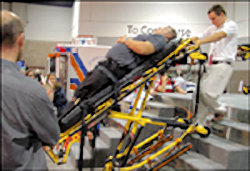Safe Patient Handling Equipment
Given the increasingly hazardous biomechanical demands on caregivers today, it is clear the healthcare industry must rely on technology to make patient handling and movement safe.

- Involve your front-line staff in testing and selecting equipment to determine the best equipment for each unit.
- Choose equipment based on the specific lifting, transfer, and movement needs of each unit and patient population.
- Make sure the equipment is conveniently located, readily available, and accessible so that staff can use it without keeping patients waiting or delaying other tasks.
- Put systems in place to ensure mechanical equipment is maintained in good condition and supplies such as slings and transfer sheets are kept clean and stocked.
- Partner with vendors that can host equipment fairs, troubleshoot issues, answer questions, and maintain and replace equipment.
- Design with safe patient handling in mind during construction and remodeling. It is easier and more cost-effective than retrofitting.
Using patient handling equipment and devices is beneficial for both healthcare staff and patients. Explaining planned lifting procedures before lifting will increase patient understanding, safety, and comfort and enhance their sense of dignity.
Knowledge Check Choose the best answer for the question.
1-7. Safe patient handling equipment should be selected based on _____.
You forgot to answer the question!
